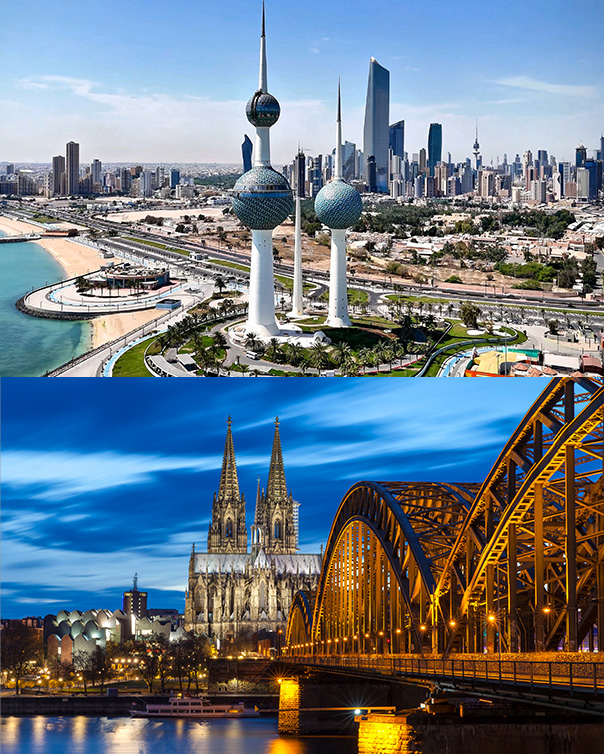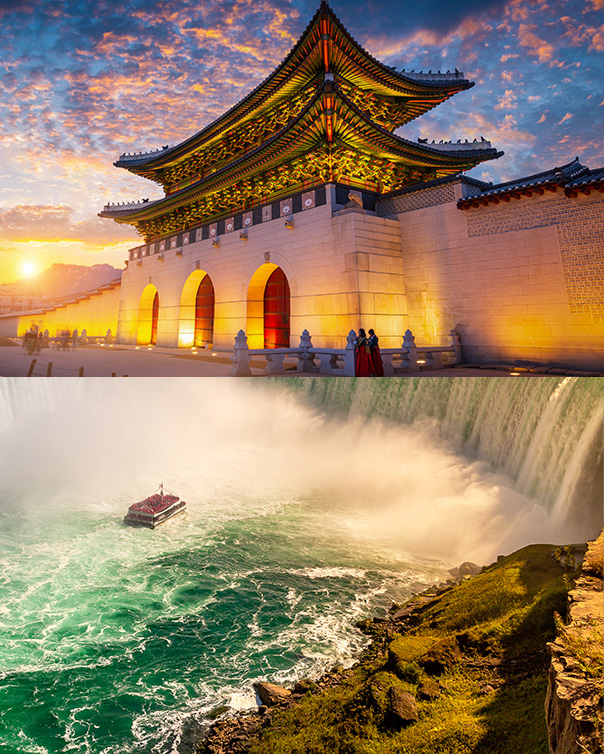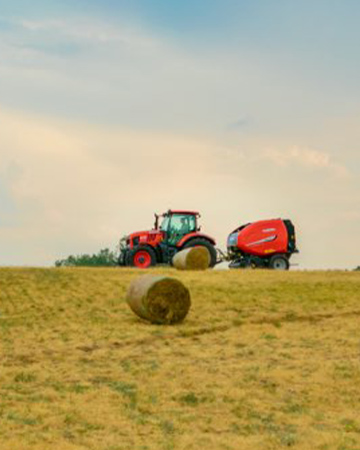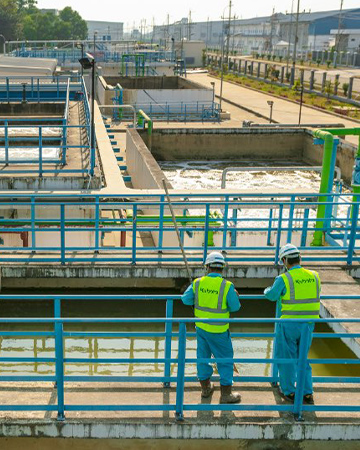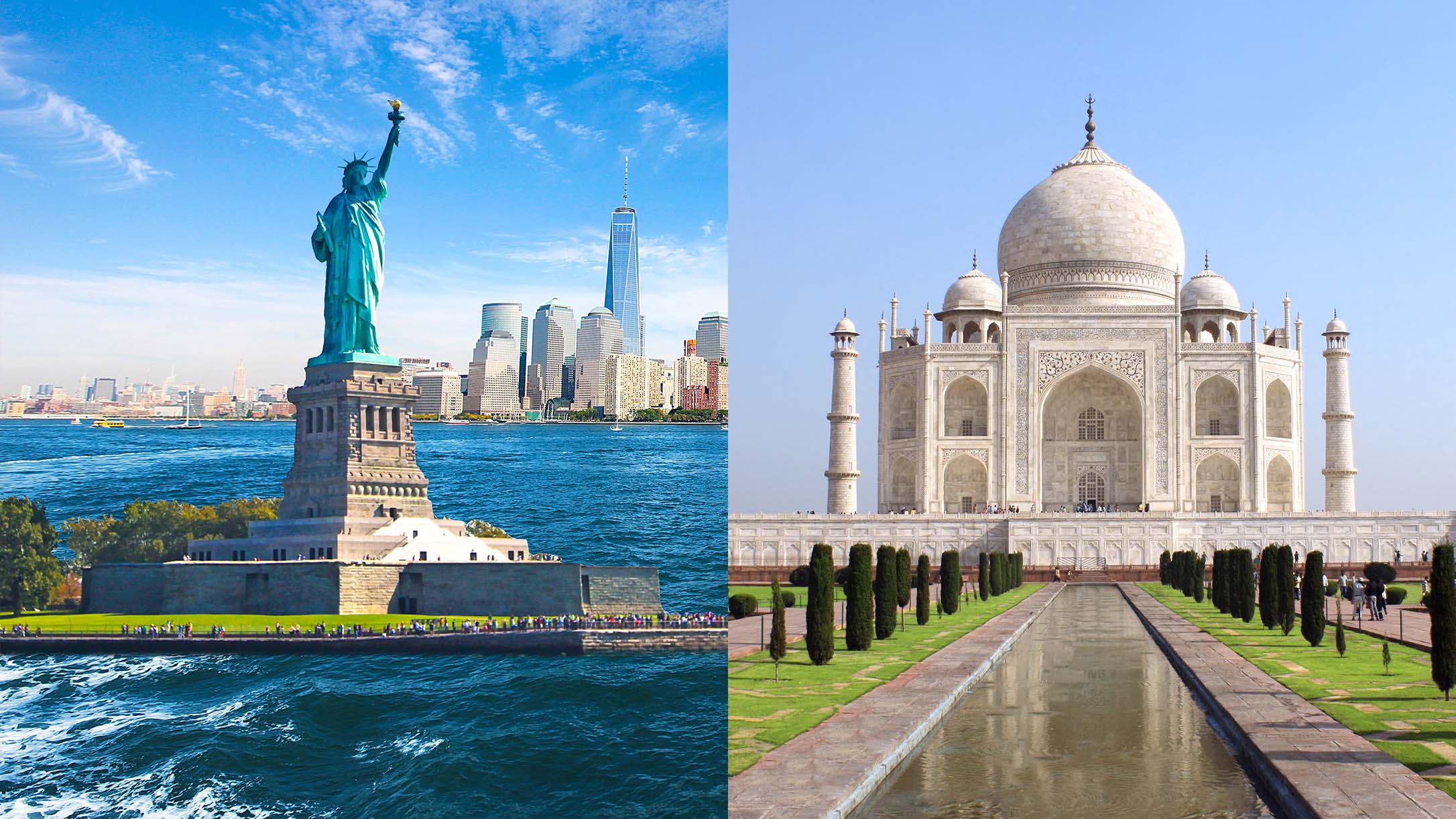
This series, entitled “Where the World and Kubota Intersect,” introduces the future that countries from all over the world envisioned at Expo 2025 Osaka, Kansai (Expo 2025) and describes the related social issues and how Kubota is involved.
This eighth installment focuses on the United States of America (USA), which is paving the way to the future with cutting-edge technology and innovation, and India, which has the world's largest population and is tackling agricultural and food security challenges. How do Kubota technologies intersect with each of these countries and open up new possibilities while addressing their respective societal challenges? We will explore some of these aspects through the international stage of the Expo.
The United States of America: Imagine What We Can Create Together
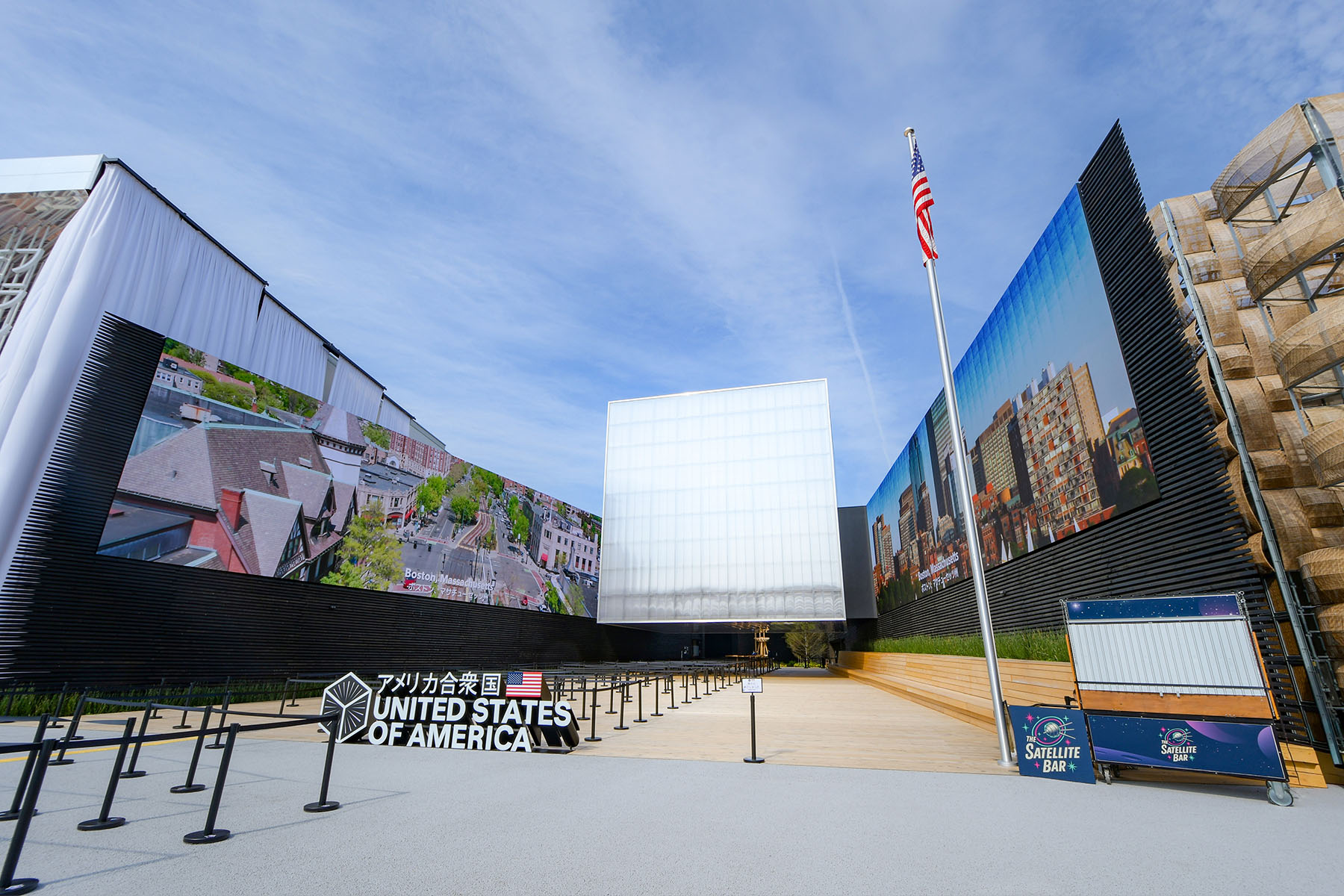
“When life gives you lemons, make lemonade.”: American proverb
The USA pavilion, with two huge screens displaying the Stars and Stripes and iconic landscapes, commanded an imposing presence. The most striking feature was the cube-shaped exhibition space, sandwiched between the two buildings, which was designed to appear as if it were floating in mid-air. Its theme was “Imagine What We Can Create Together.”
Inside, the pavilion’s official mascot “Spark” acted as a guide, inviting visitors through immersive exhibits. “Exchanges” through study abroad and research, “Innovation” featuring food systems adapted to the environment, advanced materials, and medical technology, “Travel” through the diverse landscapes in the USA, and “Space” featuring moon rocks are areas in which the USA leads the world.
One of the most popular attractions among these was the NASA rocket launch recreated inside the cube. The countdown began upon entering the room, and the moment it hits zero, a thunderous roar, flames, and smoke filled the venue. The powerful visual and audio effects transported visitors to a world of future exploration, aiming for the Moon and Mars, as well as Jupiter's moon Europa, where hopes that life may exist are high.
The spectacular exhibits depicted a “future of co-creation” symbolizing the country's prosperity and potential. The reality, on the other hand, is that American society is facing challenges. While the USA has led the global economy with its vast territory and abundant talent, behind this powerful image is a worsening chronic labor shortage.
In the agricultural sector, as of 2024, approximately 2.4 million jobs were projected to be unfilled, with over half of all farms experiencing labor shortages. Such labor shortages are also occurring in the construction sector, where a shortage of skilled workers such as carpenters and plumbers is hindering the housing market and infrastructure investment.
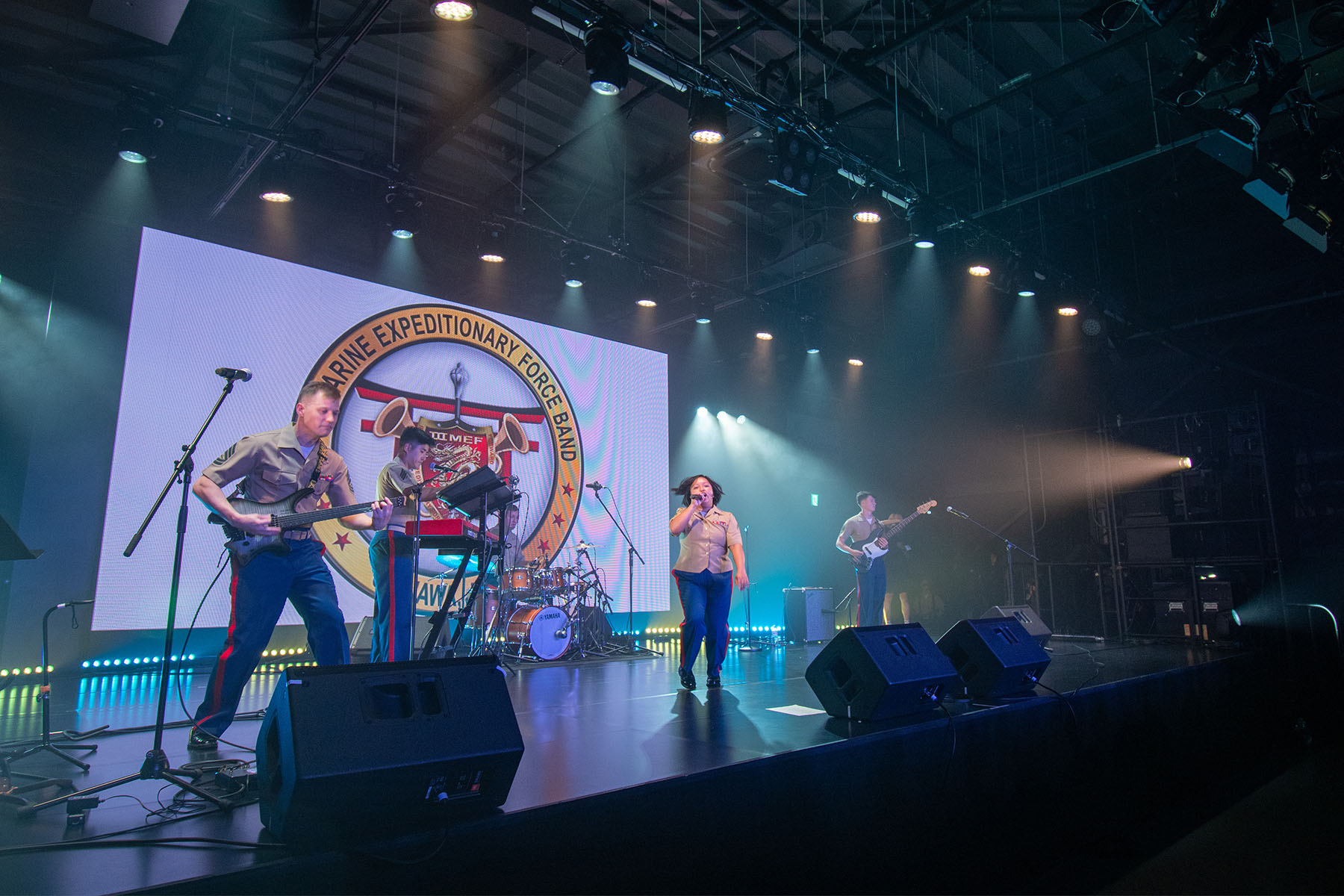
Against this backdrop of challenges, mechanization and efficiency have accelerated in both agriculture and construction. It is Kubota who has been meeting the needs in those sites.
In North America, in addition to traditional agricultural purposes, a market is emerging for those who enjoy home gardening and farming as leisure activities. To meet the wide range of needs for this diverse customer base, Kubota has expanded its product lineup around tractors, from compact tractors and riding mowers to large models for large-scale farms and utility vehicles.
Furthermore, in the construction sector, machinery such as compact track loaders and mini excavators is highly valued for its role in compensating for the shortage of skilled workers. Such work sites are supported by Kubota’s Engine Division, and its engines are used in the industrial sector, primarily in construction, underpinning the company's North American business.
And then there's water. Across the USA, particularly on the West Coast with its drought and earthquake risks, water infrastructure stability is the foundation of society. The introduction of Kubota's earthquake-resistant ductile iron “GENEX” pipes and its submerged membrane water treatment technology has been promoted as something that supports the safety of water and sewer systems. Behind agriculture and urban life, this “invisible infrastructure” also serves as a major pillar of Kubota's role.
Meanwhile, Kubota is also taking on challenges toward the future. Its “Type: S” versatile platform robot was on display at the Future City pavilion at Expo 2025. The KATR, the foundation of the Type: S model, is an all-terrain platform vehicle capable of driving on slopes while maintaining a level cargo deck. At CES, the world's largest digital technology trade show, which was held in Las Vegas in January 2025, KATR earned the “Best of Innovation” award, the top-rated honor, at the Innovation Awards®. Equipped with a 240 kg platform load capacity, offering a choice between a combustion or an electric engine, and capable of being remotely controlled, the robot was recognized for its potential for use in a wide range of work sites including agriculture, construction, and disaster response.
Furthermore, in 2024, Kubota established a local subsidiary in Hawaii, Kubota Rice Industry (Hawaii) Inc., and began milling and selling brown rice imported from Japan. The company is not only enlarging its previously restaurant-centered sales channel to households, but it is also creating new value by bringing Japanese food culture into the American lifestyle. With plans to expand into the US mainland in the future, expectations are growing for the company to play a role in connecting Japan and the USA.
If machinery and engines are the pillars that support industrial infrastructure including agriculture and construction, then developing water infrastructure and supplying Japanese-grown rice are initiatives that sustain the security and rich diversity in daily life. Engaging with both the power that supports industry and the power that sustains daily life is precisely how Kubota intersects with the world.
India: The Power that Weaves Tradition and the Future
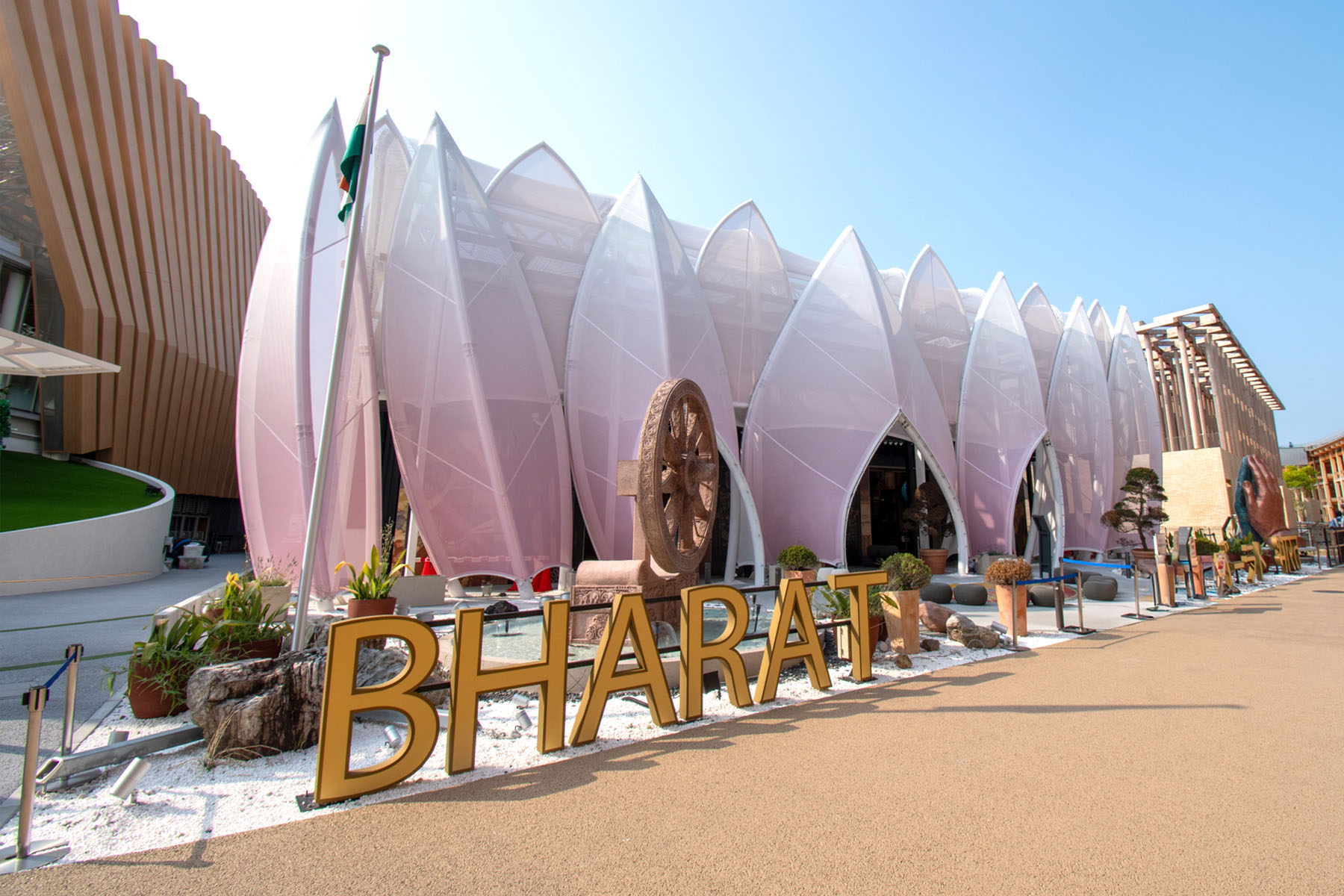
“Boond-boond se sagar bharta hai.”
(Drop by drop, the ocean fills): Indian proverb
The exterior design incorporated lotus and linden tree motifs, and the roof was fitted with a Geo-lite Mesh Rooftop integrated with 72,576 LED lights. After sunset, each light simultaneously sparkled causing the entire building to glow as if it were floating which created a majestic night view. Displaying entirely different expressions during the day and at night, this architecture left a strong impression on visitors.
The exhibits greeting visitors upon entering the pavilion showcased the intersection of tradition and innovation in India, a country of diverse ethnicities, religions, and languages. Exquisite interior decorations, embellished ceramics, and textiles conveyed the rich cultural depth of each region, while a model railway diorama reflected the strength sustaining its huge markets. Furthermore, the on-site restaurant serving cuisine with aromatic spices allowed visitors to experience the pulse of this country's daily life and traditions.
Additionally, the display of a scale model of Chandrayaan-3, the world's first lunar probe to land near the Moon’s south pole, highlighted India's status as a scientific superpower and symbolizes India's growing presence in the field of space exploration.
The theme of the India pavilion was “Bharat—ancient, eternal, and ever-evolving—.” By contrasting traditional culture and cutting-edge science in the same space, it demonstrated how diversity and a forward-thinking vision can be woven together with a single intention.
India's population exceeds approximately 1.4 billion, and overtook China in 2023 to become the largest in the world. With a high proportion of young people and an average age around 28, India boasts one of the world's fastest growth rates economically, maintaining a real GDP growth rate of over 6% for 2024. In particular, progress in its “Make in India” policy, promoting information and communication technology (ICT) and manufacturing, has also elevated its presence as an investment destination for global corporations.
However, while approximately 40% of the population is engaged in agriculture and it remains a major industry supporting people's livelihoods, factors including insufficient crop yields, delayed infrastructure development, and droughts and floods among the risks caused by climate change, make food supplies unstable.
Furthermore, in urban areas, the rapid population concentration has strained housing, transportation, and water infrastructures. Concurrent with the momentum of economic growth, there are mounting issues, such as job creation, agricultural efficiency, and urban infrastructure development.
India, proud of its notable population and growth potential, is a country simultaneously possessing both “potential” and “challenges.” How it overcomes these challenges and moves forward into the future is directly linked to the sustainability of the entire world.

India has the world's largest agricultural workforce, with small-scale farmers responsible for the majority of food production. Kubota’s supply of machinery has contributed to improving productivity and efficiency in these work sites. Machinery including tractors, rice transplanters, and combine harvesters is a major support for labor-intensive work, and is a means of addressing the planting risks posed by labor shortages and climate change.
However, when Kubota first entered the Indian market, it faced challenges due to an insufficient understanding of local uses. Currently, the company has launched a multi-purpose tractor that can be used to handle diverse tasks including cargo transport on rough terrain, and is further expanding its business base through a partnership with Escorts Limited, a major local agricultural machinery manufacturer. Joining the strengths of both companies has led to the creation of a broad lineup that combines lightweight high performance with heavyweight price competitiveness. In 2022, after becoming a subsidiary, Escorts Kubota Limited was established, strengthening local development and production capabilities.
Now, in India, a mindset along the lines of Japan’s “Kaizen” (continuous improvements) is gradually being adopted. When distributors and farmers notice small changes and remark that “our products have changed,” there is a sense that the corporate culture cultivated in Japan is spreading locally.
And with India as its base, the company is already turning its sights to the world, exporting to Europe and Africa, collaborating with local suppliers, and even recruiting outstanding engineers. The stage for its challenges, not limited to one country, is expanding with an eye toward the future of food and agriculture around the world.
The USA immerses you in epic stories through visual images, while India weaves tradition and innovation together. Though their approaches differ, at their heart they share a common question: “How do we connect people with the future?”
Kubota intersects meaningfully with each country: in the USA as a force supporting agriculture, construction, and water infrastructure, and in India as a force supporting small-scale farmer work sites. The company quietly demonstrates its commitment to addressing global challenges both as a force supporting human endeavors and the future.
The final “Where the World and Kubota Intersect: Expo Series” installment will soon be approaching. While recalling the intersections with countries that have been featured so far, the message that Kubota wants to convey to future society will be explored anew.

